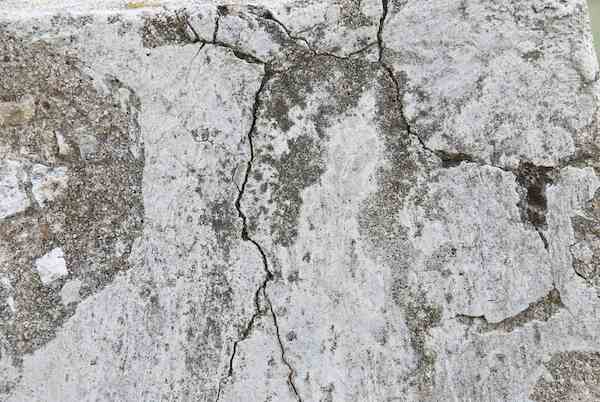
Researchers at the University of Wisconsin–Milwaukee have developed a hydrophobic and ductile concrete that may outlast all the rest. Credit: UW-Milwaukee Media Team on Youtube.
The freeze/thaw cycles of winter have been hard on the concrete steps behind my house. All that gnarly ice has left the concrete crumbling like a week-old dry cookie.

UWM students install a test slab of SECC in the driveway of a university parking structure. Credit: UWM.
A concrete repairman recently sticker-shocked me when he quoted that it would cost a couple thousand dollars to replace my rubble pile. But despite my distaste of concrete’s price, as Eileen has reported, its “go to” status as a building material is not going to change anytime soon.
Researchers at the University of Wisconsin-Milwaukee have developed a new concrete formulation that could ease my crumbling concrete woes (but not my wallet)—a material that they estimate could last over 120 years.
The lab of civil engineering and mechanics professor Konstantin Sobolev has been working on a high-performance concrete that is durable, water-resistant, and malleable. (Sounds like a cementitious dream date, right?)
The scientists engineered their better concrete, called a Superhydrophobic Engineered Cementitious Composite (SECC), to resist cracks with two superior characteristics.
First, they made the concrete superhydrophobic. “Additives in the hybrid change the concrete on a molecular level when the pavement hardens, creating a spiky surface that, although microscopic, causes the water to bead and roll off,” states the university press release. This prevents water from pooling on the concrete, seeping into the cracks, and making those cracks bigger with every freeze/thaw cycle.
The SECC is also afforded some flexibility with thin unwoven polyvinyl alcohol fibers mixed into the concrete, which help prevent crack growth. By allowing small cracks to form, but not grow, the fibers help distribute stress loads through small spaces that water cannot penetrate.
“Our architecture allows the material to withstand four times the compression with 200 times the ductility of traditional concrete,” says Sobolev in the press release.
The scientists have even used lagging pavement repairs at the university as an opportunity to perform practical tests of their new and improved concrete, installing a 4’x15′ test slab into the driveway of a university parking structure. And to make the concrete high-tech, they outfitted the slab with electrodes just beneath the surface to measure water penetration, load, and stress.
Although the SECC is more expensive than standard concrete, the elongated lifetime saves repair and replacement costs. The scientists speculate it will be most practical in applications that undergo continuous loading, such as bridge approach decks.
Beyond life expectancy, another hot topic of concrete research regards sustainability concerns. Eileen’s article covered the issue more in depth, but my fellow editor Jessica recently found another interesting research project to green up cement.
A group of researchers from the Institute of Science and Concrete Technology at the Polytechnic University of Valencia (Spain), Jaume I University of Castellón (Spain), Imperial College London (UK), and Sao Paulo State University (Brazil) have been toying with using ceramic wastes—namely, bricks—to produce more environmentally-friendly and waste-reducing concrete.

An international team of researchers have been using ceramic waste to make more sustainable cement. Credit: Ruvid.
Using only ceramic residue, a chemical activator, and water, the group produced a strong portland cement alternative. They’ve experimented with red brick clay, mixing it with just sodium hydroxide or sodium silicate with sodium hydroxide.
The team published those results in Construction and Building Materials last year. The paper is “Properties and microstructure of alkali-activated red clay brick waste” (DOI: 10.1016/j.conbuildmat.2013.01.031).
“The process to make cement in this case is very simple. First, grind the brick and mix with the activating solution. Immediately after kneading it together with the barren, the cement is ready to be placed in molds and subjected to a special hardening process at high temperature,” says author María Victoria Borrachero in a press release. (Note: The official release is in Spanish).
The team is now experimenting with ceramic wastes, particularly bathroom ceramic or porcelain tiles, and is working on replacing the activator with more sustainable replacements, too.
“We have already done tests with rice husk ash and the results are very positive. Its use would yield an even more sustainable and cheaper final product, because it would be composed almost entirely of reused waste,” says Borrachero.
Feature image credit: bittbox on Flickr.

